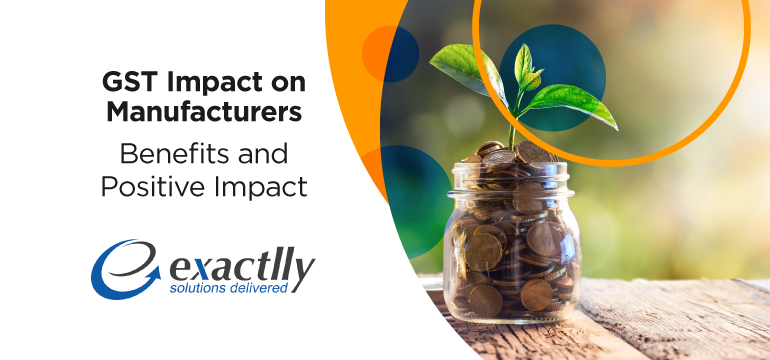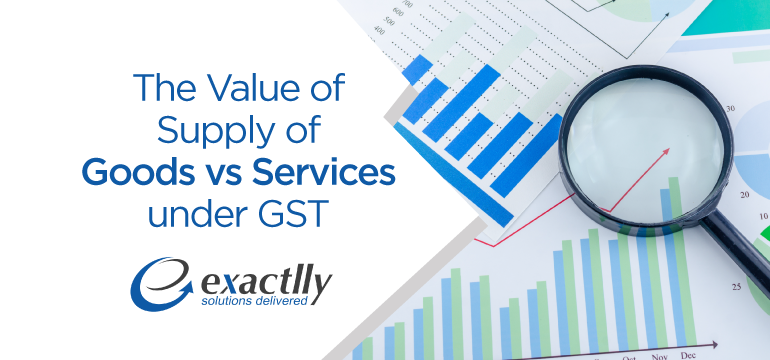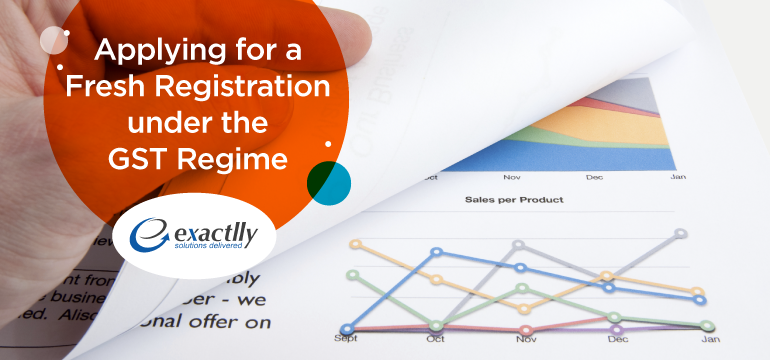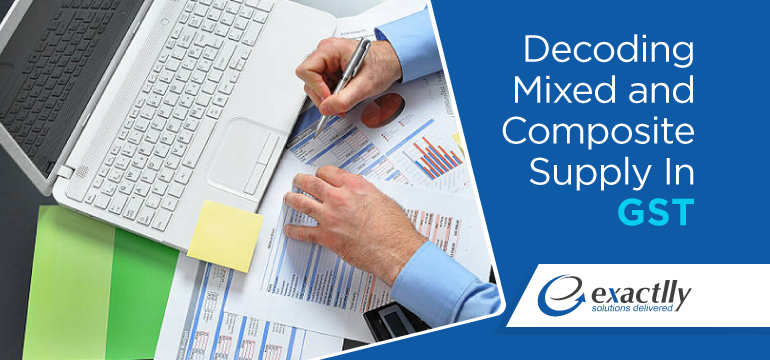This article is the first part of the GST Impact on Manufacturers.

As a manufacturing hub, India has received a huge boost pursuant to the Make in India campaign as its position on the world map has gone higher – Deloitte experts state that India is set to be part of the world’s top five manufacturing countries by 2020. The manufacturing sector in India is also set to achieve milestones domestically and internally as per this prediction as currently, IBEF reports state that the sector has been witnessing stagnant growth in the past two decades, and contributes to 16% of the total gross domestic product.
The Make in India campaign has put manufacturers in a positive light – however, it also has its shortcomings as the manufacturing sector cannot be expected to boom overnight. Nevertheless, even though the government has an entire arsenal of ideas and strategies on going about this project, it has already started implementing its biggest brainchild – the Goods and Services Tax, or the GST. As a manufacturer, will the GST be a boon or a bane? We have explored the various positive facets of the GST as applicable to a manufacturer as follows –
| Impact |
Current Indirect Tax Regime |
GST Regime |
| Production – Reduced Costs |
- Manufacturers are unable to claim any tax credit under the current indirect tax regime on any CST levied on interstate supplies. Other such taxes that cannot be credited are OCTROI, entry tax, and other local body taxes – thereby leading to an increase in the total cost of production of goods and services – adding to manufacturing costs.
- Cascading effect of taxes hits manufacturers as they are unable to bring their manufacturing costs down; similarly, retailers, distributors, and dealers of the goods and services are hit in a domino effect as they are also unable to claim any credit on these taxes levied – this finally leads to an increase in the total cost of the product when given to the consumer.
- Such costs make competition difficult when indigenously manufactured goods are compared with foreign makes – once again hitting the manufacturer hard.
|
- With the advent of the GST, all these taxes and their cascading effects are eliminated once and for all. At the production stage, tax set-offs have been permitted for goods and services thereby reducing the indirect tax on the manufacturer as well as maintaining a steady flow of credit.
- The other benefit to the manufacturer is that the manufacturer does not have stress about where to procure raw materials as the GST has made all sources (imports, local and interstate) input tax creditable. Only customs duty will be continued to be levied on imports.
|
| Eliminating Multiple Valuation Methods |
- Under the current indirect tax regime, goods are subject to payment of excise duty which is calculated through several methods such as ad valorem on the transaction value, ad quantum on the quantity of the supply or even a combination of the two.
- Mostly, the MRP valuation method is followed where the calculation of the supply is done to keep a specific percentage on the maximum retail price of the product. However, MRP related rules and regulations are heavily complicated as there are different rules for the sale of packaged goods to individuals, sale of packaged goods to institutions, sale of packaged goods as combos or promotionals.
|
- However, the GST aims to eliminate all these complicated valuation methods and techniques and simplify the process as the GST payable by the manufacturer shall be calculated basis the value of the transaction.
- The exception to this rule is the cess valuation method for two products i.e., coal and tobacco. On coal, the maximum cess limit is INR 400/tonne and on tobacco, the maximum cess limit is INR 4,170/1000 sticks.
|
| Registration as per the State and Registration as per the Factory |
- Under the current regime, multiple tax registrations were required for several factories. So, if a single manufacturer had 6 factories within a single state itself, he still had to obtain 6 different registrations for each of the factories – amounting to a chaotic process for larger manufacturers with several factories.
|
- A single taxable manufacturer may apply for a single registration for all of his factories within the same state under the GST regime.
|
| Restructuring the supply chain basis economic factors |
- Most businesses and supply chains have been structured in a manner so as to provide ease in payment of taxes.
|
- Manufacturers can concentrate on increasing their business efficiency and make calculated decisions on warehousing factoring operational aspects such as economic costs, geographical advantages, proximity to the target demographic.
- The GST aims for better benefits in terms of costs as manufacturers can claim the input tax credit on interstate supply of goods and services therefore warehouses are going to be wiped out of the supply chain.
|
| Reducing classification disputes |
- Classification of disputes is abundant under the current indirect tax regime as there are several varying rates of excise duty and VAT on various goods and services, various exemptions on several classes of goods and services, etc. which all lead to regular litigation with respect to central excise taxes as well as VAT in the manufacturing sector.
|
- Since the GST regime is a unified platform subsuming all taxes, rate structures, and minimizing exemptions, the burden on litigation is expected to decrease sufficiently.
|
In conclusion, the GST regime is expected to harness the role of a manufacturer in India in several ways, primarily, by increasing the ease of doing business and reducing several costs that are currently burdening the manufacturing sector. Having said that, there are several consequences that manufacturers would also have to face – an aspect that we have discussed in our following post.








